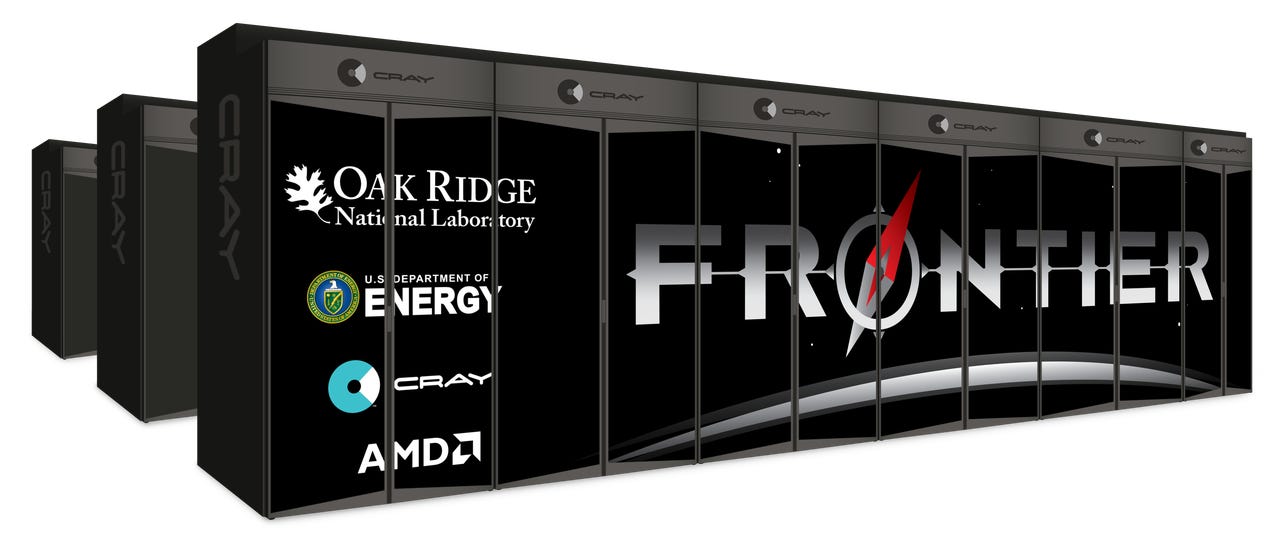
































The 1.5-exaflop Frontier system is expected to enter full user operations in 2023.
The US Department of Energy has yet to launch Frontier -- on track to be the nation's first exascale supercomputer -- but scientists are already getting a preview of what the machine will be capable of, thanks to a powerful early version of it called Crusher.
Crusher is effectively a small slice of the Frontier system. Frontier will ultimately comprise more than 100 Cray Shasta cabinets, delivering 1.5 exaflops of performance. Crusher, meanwhile, is a 1.5 cabinet iteration of Frontier. It features 192 nodes connected by HPE's Slingshot Interconnect, with each node containing one optimized 3rd Gen AMD EPYC processor and four AMD Instinct MI250X accelerators.
Crusher occupies only 44 square feet of floor space. It's 1/100th the size of the DoE's 27-petaflop Cray XK7 Titan supercomputer, which was decommissioned in 2019, but it's faster than the entire 4,352-square-foot system was.
Currently, four well-established projects at the Oak Ridge Leadership Computing Facility (OLCF) are running scientific codes on Frontier's architecture via Crusher. The results so far have been impressive.
The CANcer Distributed Learning Environment (CANDLE) project, for instance, has successfully run a Transformer model on Crusher, achieving an 80% speedup from previous systems. The project is developing next-generation natural language processing models for precision medicine using "Transformers," which can identify unseen connections between words in clinical text. The project was developed out of a partnership between DOE and the National Cancer Institute (NCI) and aims to provide the NCI with better, more accurate models for cancer surveillance.
Meanwhile, a nuclear physics code that can perform massive simulations of nuclei is seeing 8-fold speedups on Crusher, compared to the DoE's current Summit supercomputer. And one of the first astrophysics codes to be rewritten for Frontier is seeing 15-fold speedups on Crusher, compared to baseline tests from fall 2019 on the Summit supercomputer.
The Frontier was expected to become the world's fastest supercomputer last year when it arrived at the Oak Ridge National Laboratory, but it's still undergoing integration and testing. The Frontier system is expected to enter full user operations in 2023.
 Горячие метки:
3. Инновации
Горячие метки:
3. Инновации